Editor’s Note: earlier this month, Haroon brought you an interview with Symphony of the Goddesses arranger Chad Seiter. Today we have Haroon’s review of the concert event where he met Seiter, which took place during E3 2012 in Los Angeles. Later this week, Patrick will be attending a Symphony of the Goddesses performance in Philadelphia, and will be providing his own perspective on that show, as well as an interview with show producer Jeron Moore.
Zelda fans were everywhere! As I entered The Greek Theatre in Los Angeles, E3 season blossomed the theatre with fans of The Legend of Zelda: from hardcore gamers to casual gamers, from an older generation to a younger generation. Some in the crowd dressed like Link, some dressed up like Zelda, others were wearing ironic hipster T-shirts that had sayings on them like “Will cut grass for Rupies.” I felt at home.
Before the show was about to start, you could just smell the excitement. When I went to Video Games Live, I looked back before the show started and felt a slight discomfort as you could see an array of empty seats at the theatre. I take great pride at going to video game concerts, but the lack of audiences only frightens me into believing that no one cares about video game music. So as I looked back before this concert was about to start, I smiled to see a full house behind me. You have to understand – not even More Friends: Music from Final Fantasy had a full house when it first premiered in LA. I was there, I remember the empty seats. The Legend of Zelda: Symphony of the Goddesses may have a chance at impressing its audience way differently than any concert have in the past.
Was the audience impressed? Was I impressed? Find out after the jump!
As the excitement simmered down, conductor Eimear Noone came out, dressed in a beautiful suit with a pretty bow tied behind her back, and red shoes that really made her glow. She was like beacon of beauty on stage, standing at the conductor’s podium, welcoming the audience, picking up the conductor’s baton, and the show began. It was as if she began to wield the orchestra in the shape of The Legend of Zelda. It was beautiful. You could just feel the audience blush against the ferocious energy she displayed. In reality, Ms. Noone was concentrating to synchronize the entire orchestra to a video displaying in-game cinematics from the Zelda series, so she had her work cut out for her; she did an excellent job wielding the orchestra. Because everything was in sync, it made a big impact in the presentation of the entire show.
The prelude music set up mostly everything I needed to know about the show. For starters, everything is arranged, or as I like to call it, remixed. “Remixed” is such a satisfying word to describe what the audience heard. The original melodies of the game were remixed by Chad Seiter, who (I interviewed for OSV) approached the music to Zelda differently than many other orchestral arrangements I’ve heard at live concerts. Despite what many concert-goers may want you to believe, the music you hear was nowhere close to the same compositions Kojo Kondo composed. However, the arrangements were approved and backed by Kojo Kondo and Nintendo. The music itself sounded like it was carefully sewn together, like it was made in sync with the video that was displayed on screen.
This video I’m referring is something else entirely. It’s like those movie showings where you watchThe Lord of The Rings while an orchestra preforms the music live. But instead of a movie, the video shown on screen was in-game cinematics from Zelda, played to sync with a live orchestra. The video wasn’t just random clips either; it looked like a lot of thought had gone into editing the cinematics together. This made the music that much more meaningful. I have heard the idea of a video turning off some Zelda music lovers, but I’m confused as to why. The visuals are there to only excite the audience, the music matching the cinematic only enriches the Zelda experience. If anything, people who may know nothing of a certain entry in the Zelda series come off enjoying the visuals along side a 100+ piece orchestra. There is no way you can’t. The arrangements themselves were excellent as well. You could tell that Mr. Seiter didn’t waste one note. Every note had a reason for being there.
After the prelude, Zelda Williams was introduced. I wasn’t entirely sure of who Zelda Williams was, or how she related to the concert, just that her name was Zelda. I must admit, I don’t watch a lot of TV, or keep up with the gossip on celebrities, but eventually it clicked. I thought “wait … isn’t Zelda Williams the daughter of Robin Williams? Wasn’t Robin Williams in a commercial with his daughter who he named after the game’s heroine?” Yup, that’s her alright. The concerts producers thought it would be fun to invite Zelda Williams to host the show. And despite their best efforts, I had a lot of people tapping me during the show asking me who Zelda Williams was. So I simply said “Robin Williams’ daughter” and it quickly clicked for them too.
Zelda Williams, confident and beautiful, came up on stage, ripped on Navi, and introduced us to Symphony of the Goddesses. The concert would play out in four movements: 1) Ocarina of Time, 2) Wind Waker, 3) Twilight Princess, and… well, Ms. Williams kept quiet about the last movement.
For many, the show was all about the The Legend of Zelda: Ocarina of Time. Almost every nerd in the ’90s has played Ocarina of Time as it’s — arguably — one of the best video games of all times, so there was a lot of anticipation built up around the first movement. The Ocarina melodies played around a flute, it was a bit different but executed with precision; the songs had a nostalgic impact on the audience. Music around the Hyrule Dungeon sounded beautiful, with action-packed trumpets and hard percussion really selling it for me. At some point in the concert, a friend asked me “Where is the chorus? It would have been really awesome if they had one.” Well I’m not really picky on which musical instruments the arranger chooses, especially since I consider the arranger the decider of which instruments should play, not the fans, but right as my friends said this, the chorus –- which was there but not visible at the time –- started singing the Temple of Time melody. I replied with a smirk, “Right there, behind the orchestra.” The melodic aspects of the song were transferred over to a vocalist, and it had a majestic feeling.
I’m not so much a fan of Wind Waker or Twilight Princess because I didn’t get around to playing either of these games, so most of my opinions on the second and third movements are along the lines of “watch the cinematic on screen and enjoying the amazing music both games had to offer.” This is also where the in-game cinematic greatly assisted and enhanced the Zelda experience. The music to Wind Waker was highly percussive and rhythmic, and only at the end of the movement does the piece become beautiful and melodic. Twilight Princess was the most epic-sounding out of the first three movements and the visuals show how different each Zelda is, yet how many correlations can be found throughout the series. I have a feeling that if it wasn’t for the in-game cinematic that played in sync with the live orchestra, most people would have skipped the concert after the first movement, not out of boredom, but because of the disconnect those people may experience regarding Wind Waker and Twilight Princess.
Another thing — if you hadn’t played Ocarina of Time, Wind Waker, and Twilight Princess, it’s worth stating that there will be spoilers showing what happens in each Zelda title. It’s okay though, because by the end of the day, watching these games and listening to the music orchestrated only made me want to play Wind Waker and Twilight Princess.
I wasn’t aware of the fourth and final movement until Ms. Williams announced what it was: The Legend of Zelda: A Link to the Past. The excitement of the audience was overwhelming. I’m not sure how many people in the crowd had played A Link to the Past but for me, the music brought chills down my back. It was orchestrated wonderfully. There is nothing more beautiful at a Zelda concert than hearing a harp and a flute play an arrangement melody of the “Main Theme of Zelda.”
You have to understand that underneath all the music is structure. The music from this concert series has a definitive start, a middle, and an end. This structure unfolds as you watch clips from the game on-screen. To quickly walk through this structure, each movement begins with an adventurous theme surrounding Link, then the music sets up the stage for Ganon, then comes the love interest, Zelda, and the movement finishes with the last battle against Ganon. It’s not hard to find correlations: the three characters — Link, Zelda, and Ganon — and the three triangles of the triforce upon each character that represents their most developed quality upon the Triforce. All of this information was packed into the concert’s arrangement. I have never been to a video game concert where such depth took place within the music. It’s partly why I didn’t mind being spoiled by witnessing the endings of Wind Waker and Twilight Princess.
By the end of the show, the audience couldn’t help but ask for an encore! The best part was that the calls for an encore were answered! We got an encore, a surprises at the end that made the crowd go wild. I don’t want to ruin the surprise for you, just know that Nintendo listens to their fans. Zelda Williams kept coming on stage, implying that this was the “Last song” and then after the song, she came back and said “I lied, we got a surprise for you!” Even better is that she did this more than once. I loved every second of it. Maybe the following picture could give you a hint at what was played.
I loved the show, I loved the orchestra, I loved the crowd, I loved the composition, I loved the conductor. My only complaint was that, at times, the violins were too loud, and most people could audibly tell that some instruments were being drowned out as the violins played their parts. I don’t know whose fault this would be, whether the conductor wanted the violins louder than the other instruments, or that the moment in the music artistically called for the violins to play louder. Also keep in mind that this was just at the LA concert. The Zelda symphony hires and supports local musicians as they travel across the country, so this issue may not exist at other concerts. This also gives each Symphony of the Goddesses performance a different feel, a different vibe, one unique to its own city.
If you get a chance to, go to The Legend of Zelda: Symphony of the Goddesses. You don’t need to be a Zelda buff, or need to have played all the games in order to enjoy the concert. I know that some people will say that it is disrespectful to see someone playing Zelda during a symphony. Personally, I think that view in itself is rather disrespectful. Many people don’t share the same level of passion that you may have towards a symphony. If anything, shows like this are a common practice across the country, like the concerts I mentioned earlier where a live orchestra plays music to a viewing of The Lord of the Rings. And in that, you must realize that the original music was not intended to be heard in a two to three hour sitting; it was made to accompany the actions on-screen. So in that sense, The Legend of Zelda: Symphony of the Goddesses is more respectful to its original medium, a video game. This is a symphony that is made for the hardcore fans and casual gamers, from the younger generation to an older generation. If you do end up going, you’re bound to have a good time.
You can check out more info on concert information at zelda-symphony.com.
Tags: Chad Seiter, Concert Review, E3 2012, Eimear Noone, Greek Theatre, Live Event, Los Angeles, Symphony of the Goddesses, The Legend of Zelda, Zelda 25th Anniversary, Zelda Williams





























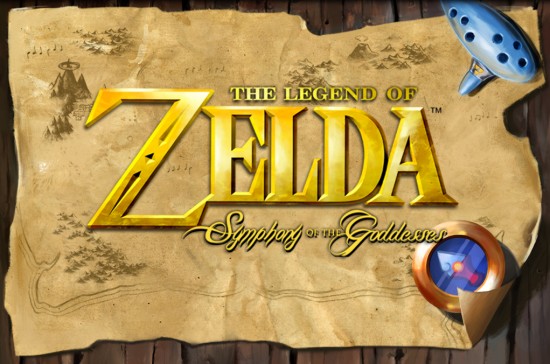




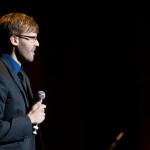
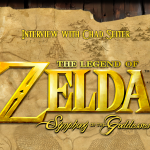
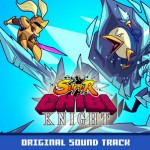
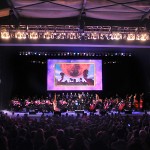







Ohhhh man, I hope they release a CD of the arrangements. I won’t be able to go to the Dallas show (or any others). 🙁